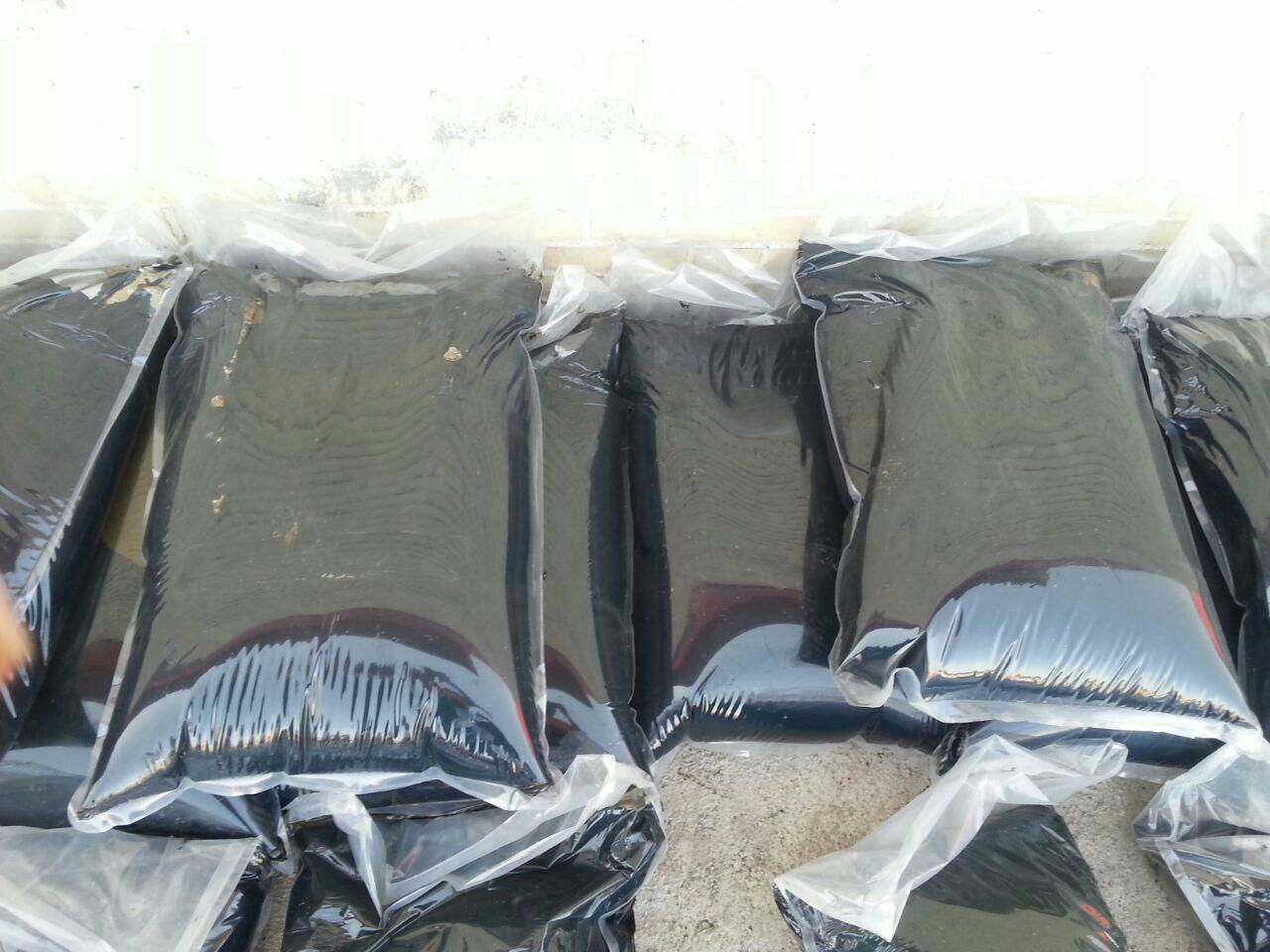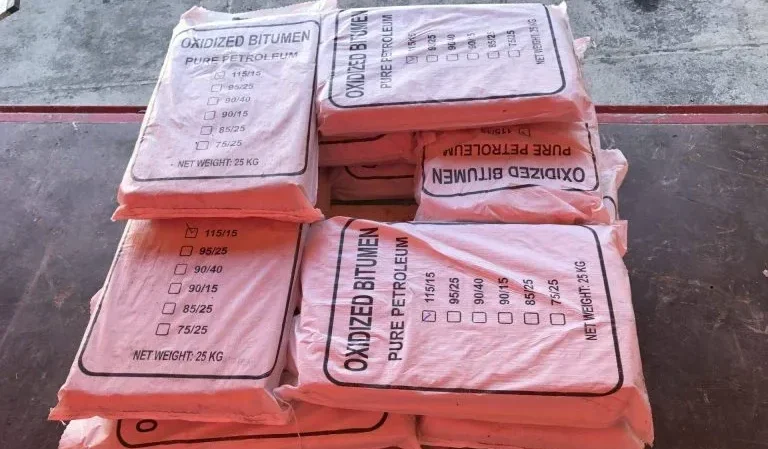
OXIDIZED BITUMEN 90/40 – PREMIUM BLOWN ASPHALT
RAHA Oil is a trusted supplier and exporter of Oxidized Bitumen 90/40, based in Dubai, United Arab Emirates, serving industrial, construction, and trading customers across the UAE, GCC, Africa, Asia, and worldwide. Our Oxidized Bitumen 90/40 is manufactured to international standards and offers superior thermal performance, adhesion, and durability.
WHAT IS OXIDIZED BITUMEN 90/40?
Oxidized Bitumen 90/40 is a high-quality blown asphalt produced by passing hot air through selected petroleum bitumen (usually 60/70 grade) under controlled conditions without any catalyst. This air-blowing process raises its softening point, enhances stability during melting, and provides stronger rubber-like properties compared to penetration grade bitumen. The grade “90/40” indicates the midpoint of its softening point (85–95 °C) and penetration range (35–45 dmm), giving the material an ideal balance of rigidity and flexibility for industrial applications. Oxidized Bitumen 90/40 is a solid or semi-solid black material that becomes liquid when heated and is widely used in the Mediterranean region—especially in Morocco—for waterproofing, coatings, adhesives, insulation, and various construction and industrial uses. It is produced through continuous or staggered blowing processes, and its properties are measured according to ASTM D36 for softening point and ASTM D5/IP49 for penetration.
USES OF OXIDIZED BITUMEN 90/40
There are many uses of this grade of oxidized bitumen but it is mainly used for industrial applications such as roof felts, waterproofing, roof and floors anti-rust pipe coating, anti-slip layer compound, sound dampening felts, coats for automobile industry, joint filling compounds, sealants and bituminous mastic. Oxidized bitumen 90/40 is used in the chemical, fuel, paints, lacquers, varnishes, paper-pulp-board, textile processing, road construction, pavement, crack seals and repairs, civil works, roofing, construction industries; sealing and insulating buildings, adhesive, construction materials additive, dust-binding, insulating and impregnating agent, and also to manufacture rubber and plastic products. Oxidized Bitumen 90/40 products are also used in asphalt-based paints for corrosion protection of metals, in lining public works structures, adhesives in electrical laminates, base for synthetic turf. Typical uses for Oxidized Bitumen 90/40 are for water-proof application and corrosion resistance for pipe coating, Portland cement pavement, hydraulic applications, paint manufacturing, caulking, mastics, and damp proofing. This grade of bitumen can be used for insulation and isolation in bitumen membrane sheets. It is also used in the automobile industry for car undercoating as it is proven to be an excellent water-proofing, dust proofing and also noise proofing material.
Oxidized Bitumen 90/40 is versatile and widely used in:
CONSTRUCTION & WATERPROOFING
- Roofing felts and waterproof membranes
- Foundation damp-proofing
- Structural sealing and insulation
PROTECTIVE & INDUSTRIAL COATINGS
- Pipe coating and corrosion protection
- Tank linings and chemical containment
- Asphalt-based paints, mastics, and sealants
CIVIL WORKS & PAVEMENTS
- Joint fillers and crack sealing
- Portland cement pavement protection
- Asphalt modifiers and additives
SPECIALTY & OTHER USES
- Automotive undercoating (waterproofing, dust proofing, noise proofing)
- Adhesives in electrical laminates
- Base for synthetic turf and industrial flooring
- Bonding agent in paints, varnishes, lacquers, and textiles
KEY BENEFITS:
- Excellent thermal and chemical stability for hot environments
- High softening point with improved resistance to deformation
- Strong adhesion and bonding for coatings and sealant
- Enhanced waterproofing and protective performance
- Durable in industrial and construction use cases
HANDLING & SAFETY GUIDELINES
 Oxidized Bitumen 90/40
Oxidized Bitumen 90/40
Proper heating and handling are crucial:
- Heating: Oxidized Bitumen 90/40 should be gradually heated (typically up to 220–230 °C) before application.
- Safety: Wear heat-resistant gloves, goggles, and protective clothing. Avoid overheating, which can degrade properties and release fumes.
- Storage: Store in a cool, dry place away from open flames. Follow MSDS instructions for safe storage and handling
TECHNICAL ADVANTAGES OF BLOWN ASPHALT 90/40
- Durability
- Flexibility
- Water-Resistant
- Chemical Stability
COMPARED TO PAVING GRADE BITUMEN:
- Reduced temperature susceptibility
- Exhibits a more ‘solid’ nature at ambient temperatures
- High penetration index
PACKING OF BLOWN ASPHALT 90/40
We supply Oxidized Bitumen 90/40 in multiple packaging formats to meet your logistical and operational needs:
- 20 kg & 50 kg Kraft Paper Bags
- 25 kg Carton Boxes (molded / craft / polyamide)
- 150 kg, 180 kg & 200 kg Steel Drums
- Bulk / Container loading for export
TECHNICAL DATA SHEET OF OXIDIZED 90/40
BITUMEN 90/40 TEST METHOD UNIT SPECIFICATION
Specific gravity @ 25/25 °c ASTM D70 Kg/cm³ 1.05 approx
Penetration @ 25°c ASTM D5 mm/10 35-45
Softening point °c ASTM D36 °C 85-95
Ductility @ 25°c ASTM D113 cm 5.5 min
Loss on heating(wt) % ASTM D92 wt % 0.2 max
Flashpoint °c ASTM D92 °C 250 min
Solubility is CS2(wt) % ASTM D4 wt % 99.5 max
Spot test A.A.S.H.O.T 102 - Negative
WHY CHOOSE RAHA OIL
- UAE-based supplier with global shipping
- Quality products meeting international standards
- Competitive pricing and reliable delivery
- Custom packaging and export documentation
- Technical support and product guidance
Our Oxidized Bitumen 90/40 delivers performance and durability for waterproofing, coatings, construction, insulation, and industrial applications from Dubai to global markets.
REQUEST A QUOTE
Email: info@rahaoil.ae
Phone / WhatsApp: +971 4 566 4998 / +971 56 281 7292
Office: Burlington Tower, Business Bay, Dubai, UAE
Request technical datasheets (TDS), MSDS, pricing, or samples, our team is ready to assist.
For more information, please Contact our Sales Team.

